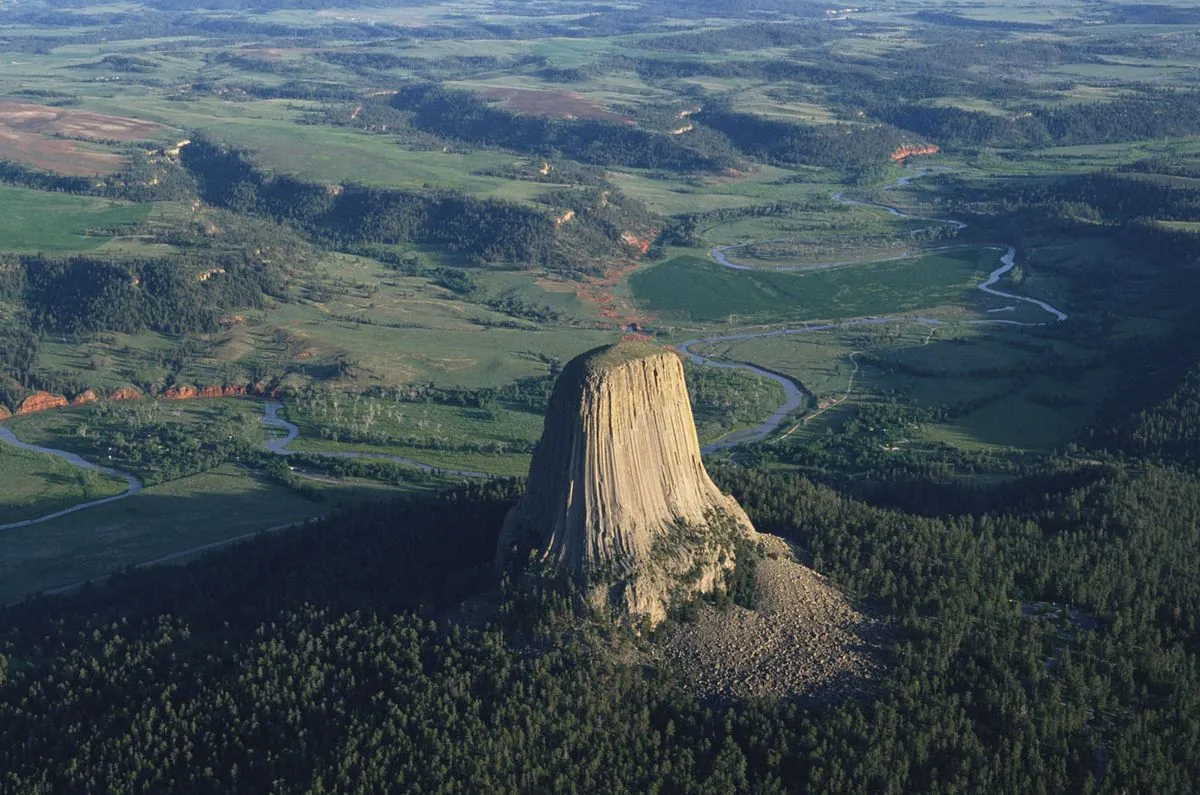A climbing expedition at Devils Tower National Monument in Wyoming ended in tragedy on September 22, 2024, when a climber lost his life during a rappelling descent. The incident occurred on the El Cracko Diablo route, leaving the victim's climbing partner stranded without equipment on the tower's face.
Stewart Phillip Porter, a 21-year-old from Eau Claire, Wisconsin, was identified as the deceased. This unfortunate event marks the seventh climbing-related fatality in the monument's 118-year history, a sobering statistic considering the approximately 6,000 climbers who ascend the tower annually.
The stranded climber was successfully rescued without injury after alerting others to their predicament. Doug Crossen, Superintendent of Devils Tower National Monument, confirmed that an investigation into the cause of the fall is ongoing.
Devils Tower, standing at 867 feet from its base and 5,112 feet above sea level, is a geological marvel and the world's largest example of columnar jointing. Composed of phonolite porphyry, an igneous rock formed from cooled magma, the tower is surrounded by younger sedimentary rocks, leading to debates about its formation among geologists.
Established on September 24, 1906, Devils Tower holds the distinction of being the first declared United States National Monument. Its cultural significance extends beyond its geological uniqueness, with over 20 Native American tribes considering the site sacred. In some indigenous languages, the formation is referred to as "Bear's Lodge" or "Bear's House," reflecting its spiritual importance.
The monument's climbing history dates back to July 4, 1893, when William Rogers and Willard Ripley completed the first known ascent. Today, over 150 rock climbing routes have been established on the tower. However, climbers are requested to voluntarily abstain from ascending during June, respecting Native American cultural practices.
Devils Tower's fame extends beyond the climbing community. It played a prominent role in Steven Spielberg's 1977 film "Close Encounters of the Third Kind," cementing its place in popular culture. The monument has also been the site of unusual events, such as the 1941 incident where George Hopkins parachuted onto the summit and remained stranded for six days before being rescued.
While the tower continues to erode, with large columns occasionally detaching, it remains a captivating destination for both climbers and nature enthusiasts. The surrounding 1,347-acre monument is home to diverse wildlife, including white-tailed deer, prairie dogs, and peregrine falcons.
This recent tragedy serves as a stark reminder of the inherent risks in climbing, even on well-established routes. As the investigation continues, the climbing community and park officials will likely review safety protocols to prevent future incidents at this iconic American landmark.
"The accident is still being investigated."
